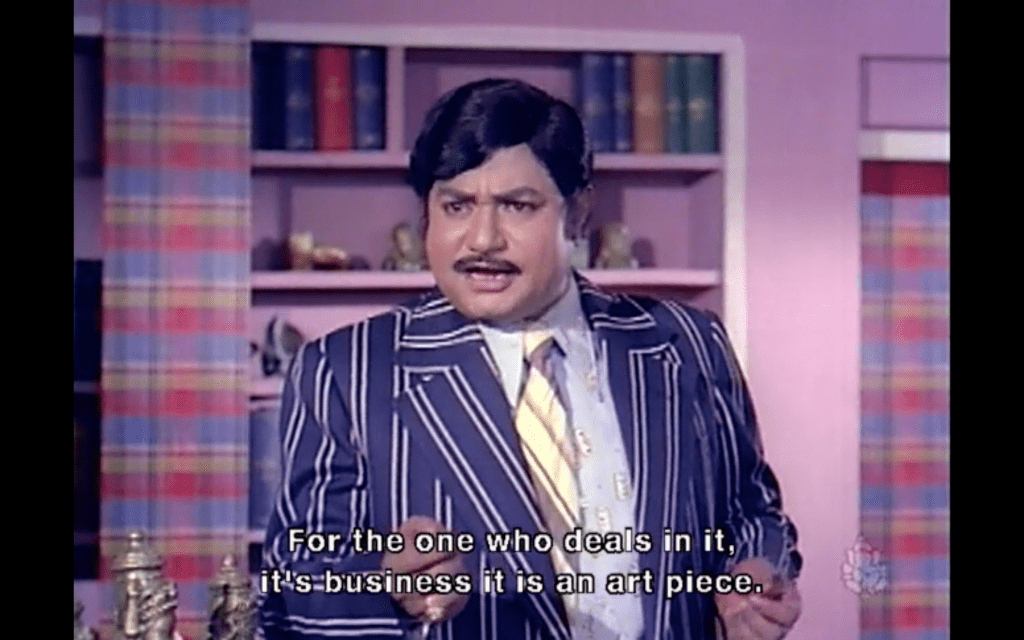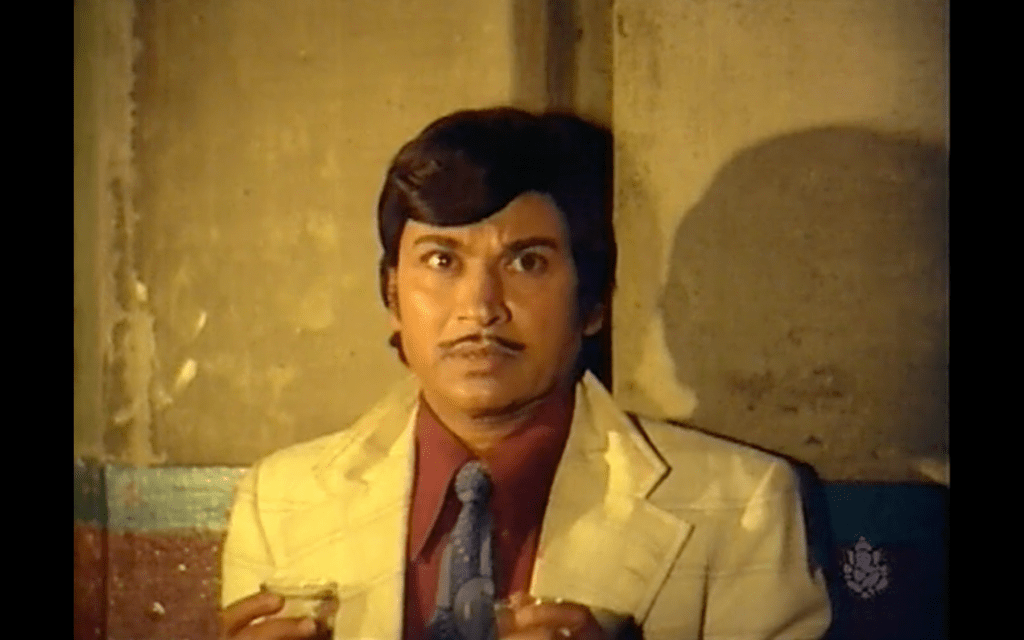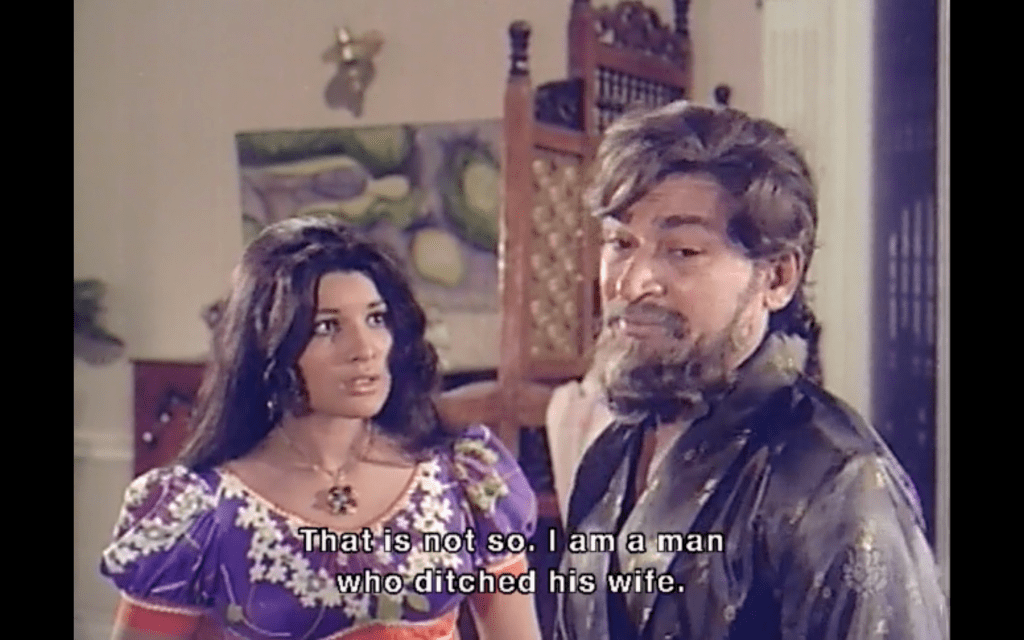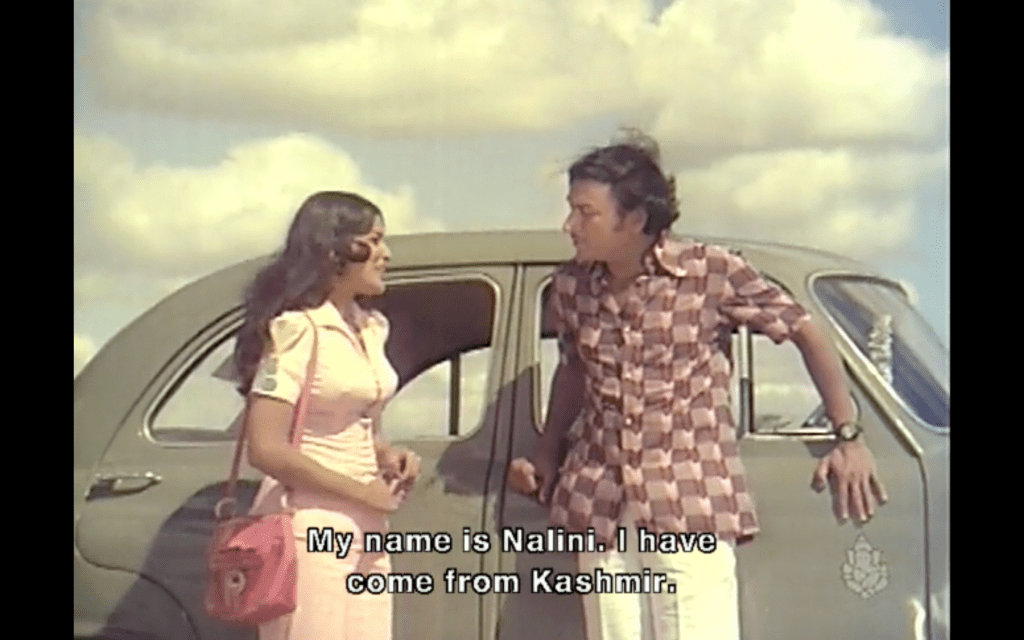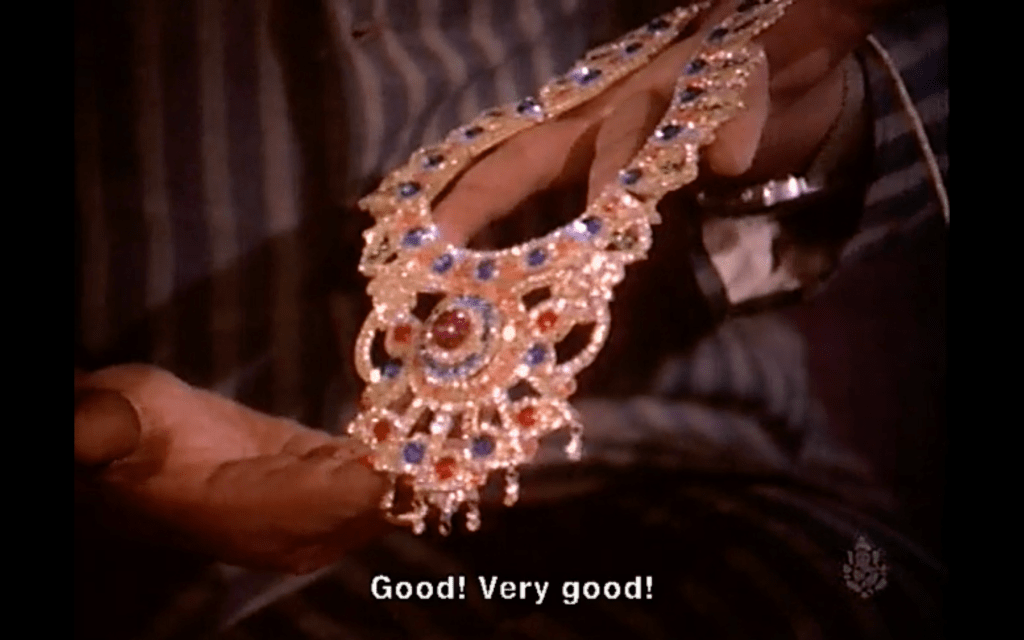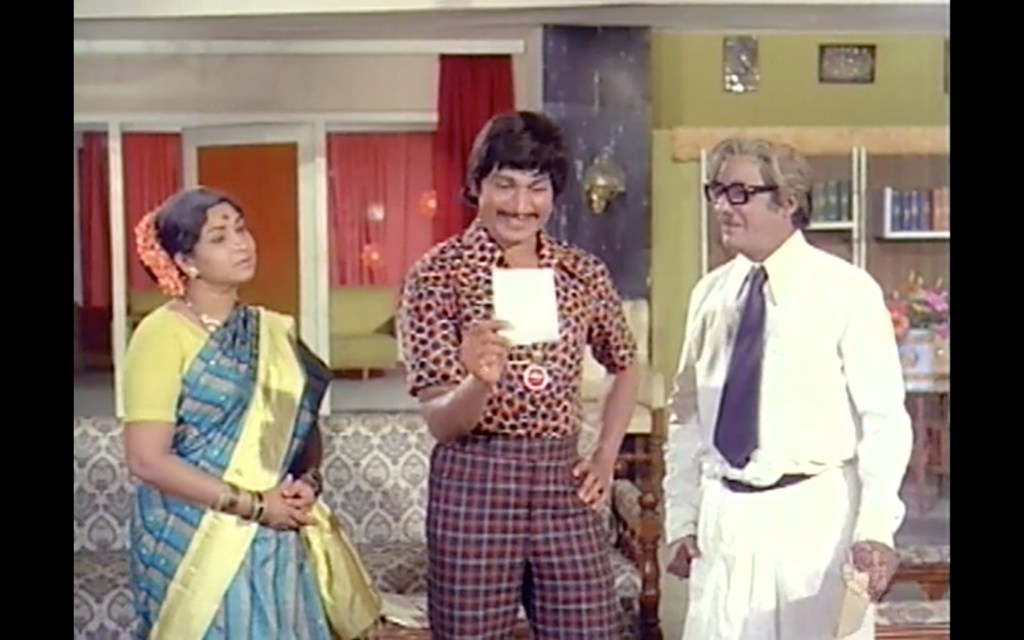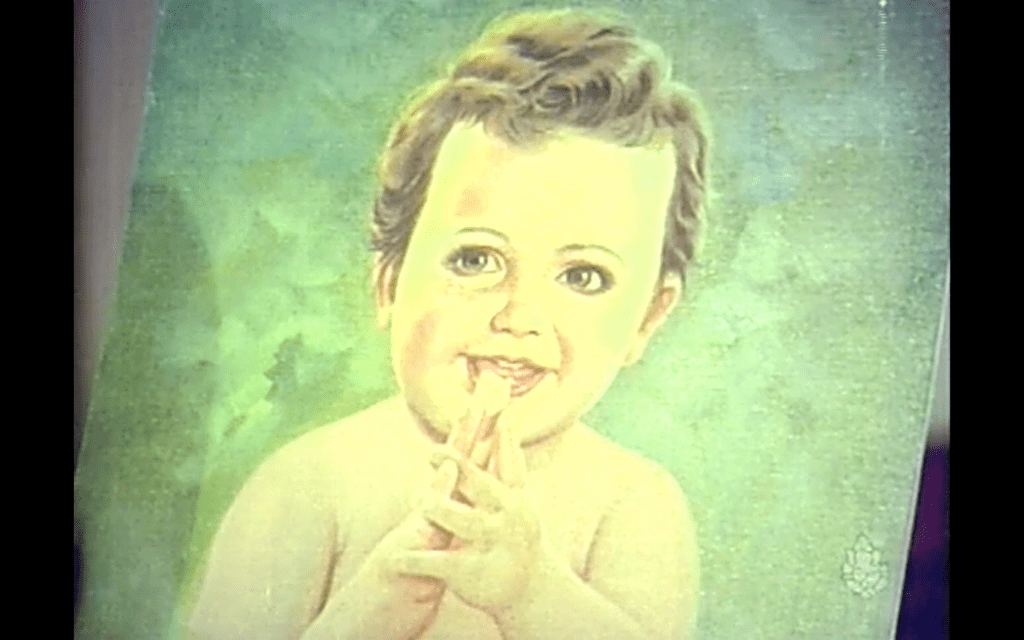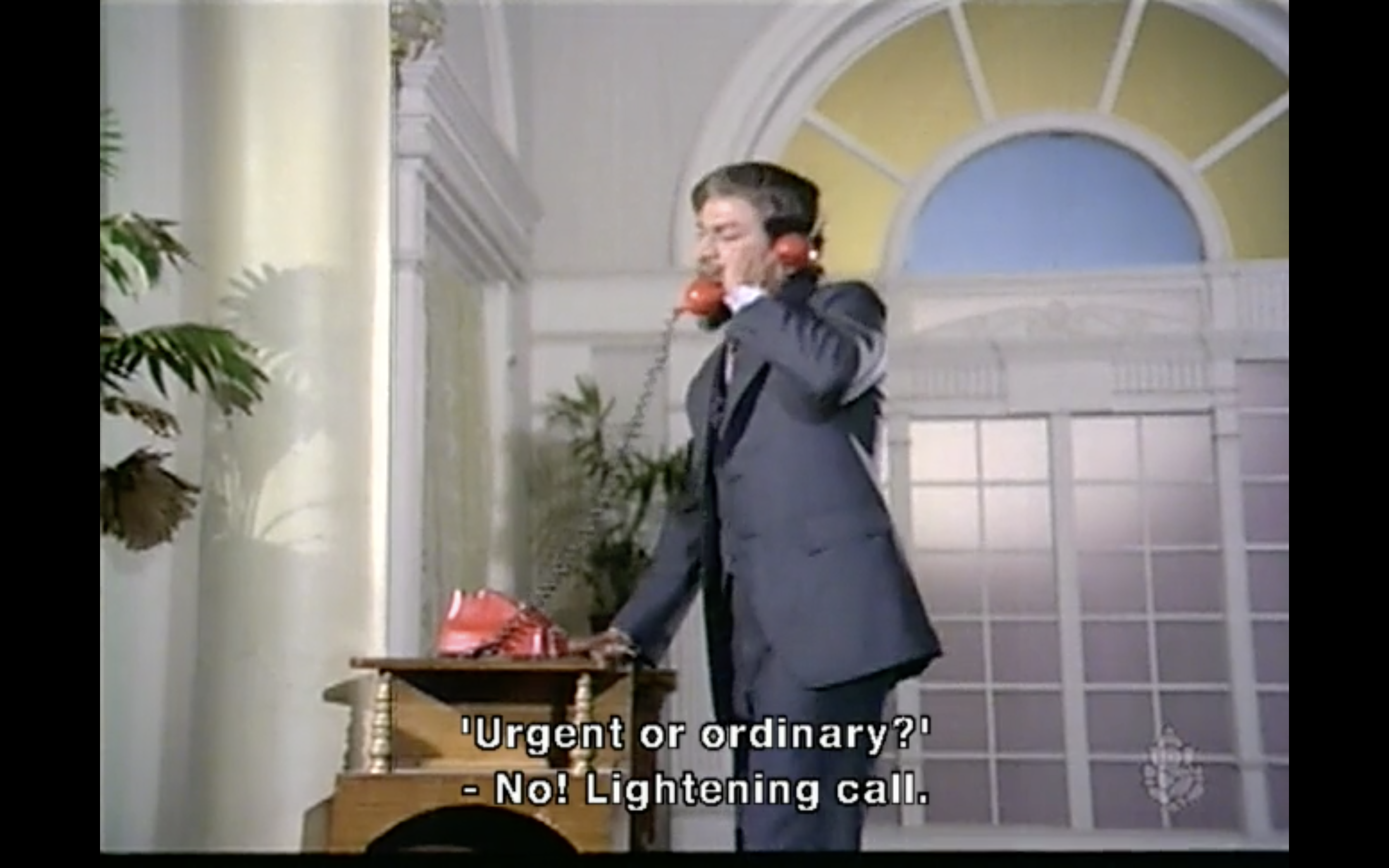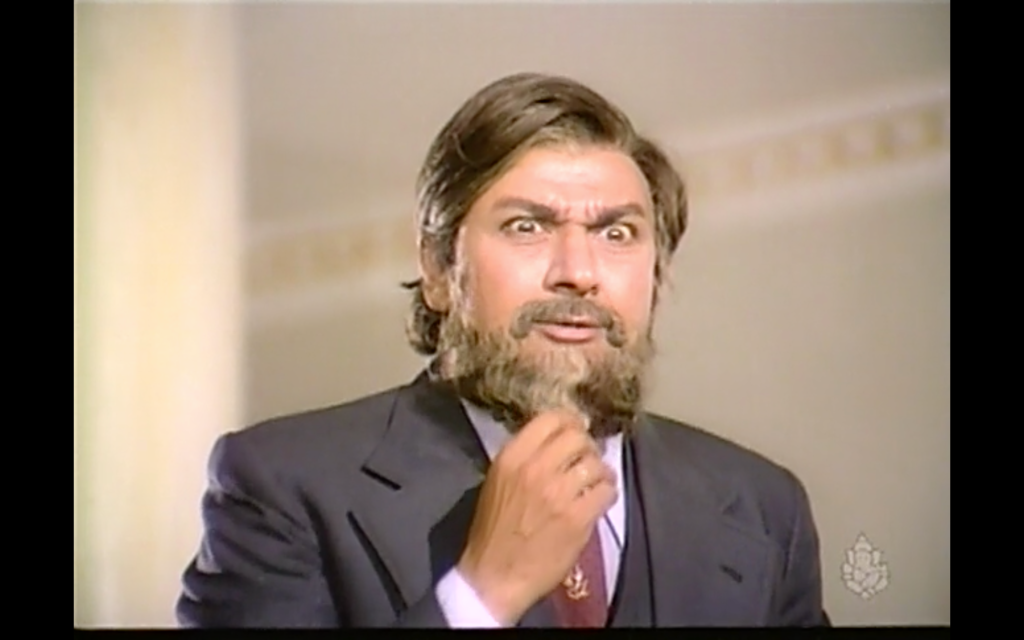
A family torn apart by murder, children separated at birth, villainous villains, a triple role for Dr Rajkumar and 3 wonderful heroines – Shankar Guru has every single masala trope and then some. With a stellar cast and convoluted storyline, M.D. Sunder’s screenplay has something for absolutely everyone. Thanks to blog reader TL for the recommendation and I agree this is a fabulous film! Oh, and if anyone thinks the brief synopsis above sounds familiar, Shankar Guru was the inspiration for Hindi film Mahaan.
The film starts with Rajashekhar (Rajkumar) disagreeing with his business partners including Madanlal (Thoogudeepa Srinivas), a man who takes dressing to match his surroundings very seriously indeed.
The partners want to start selling idols taken from temples overseas and Rajashekhar disagrees so vehemently that he dissolves their partnership straight away. However, in the ensuing struggle one of the potential investors is accidently killed by Rajashekhar. He immediately races home and runs for the train station with his heavily pregnant wife. But as the train pulls out of the station, only Sumati (Kanchana) is on the train with Rajashehkar left behind.
Years later, Sumati is making a living by selling paintings in Mysore while trying to persuade her son Shankar (Rajkumar) to find a job. Shankar meets Nalini (Jayamala) when he saves her from some thugs who were harassing her, and she arranges for him to go and work for her guardian Jayaraj who lives on an estate in Srinigar. At the same time, Malati (Padmapriya) is arguing with her grandfather Gurumurthy (Sampath) and refusing to get married. As a way to appease him, she decides to pretend to be married to local entertainer Guru (Rajkumar) who in reality is the son of lawyer Lakshman Rao (Balakrishna) and is in Kashmir specifically to woo Malati. Guru was sent Malati’s picture by her grandfather’s doctor, Dr Prema (Uma Shivakumar) who is his father’s sister.
Just before Shankar heads off to Kashmir, he visits a local temple where a group of thieves use a tiger to frighten off the worshippers before stealing a valuable necklace. Photographer Prem Kumar (Vajramuni) is a friend of Nalini and her guardian, but is also in league with the thieves and he hides the necklace in some paintings by Sumati that Nalini has bought for Jayaraj. The gang is based in Srinigar, and they plot to get the necklace back from Shankar when he arrives by substituting Madanlal’s son Divakar (Chandrashekhar) as the new estate manager.
With me so far? The plot gets even more convoluted when it is revealed that Dr Prema was at the hospital when Sumati gave birth, and she actually had twins! Lakshman Rao’s son was stillborn, so Dr Prema separated the children, giving one to Sumati and one to her brother. Fans of the significant item that ultimately reunites separated lovers/brothers/other miscellaneous family members will be happy to hear that one such item does play a role in the film, and that ultimately everyone’s relationships to everyone else are explained. Although not before there is plenty more confusion!

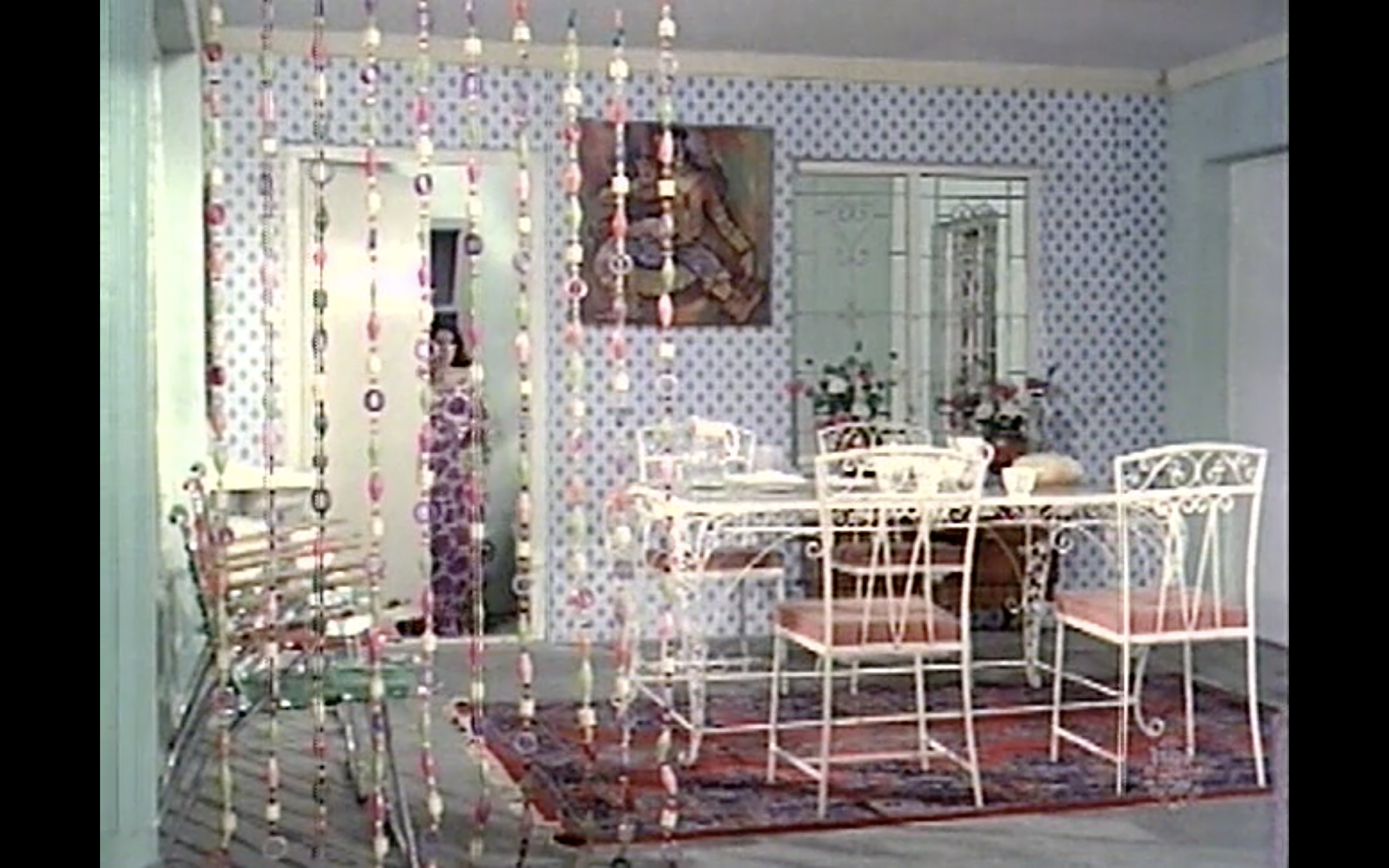

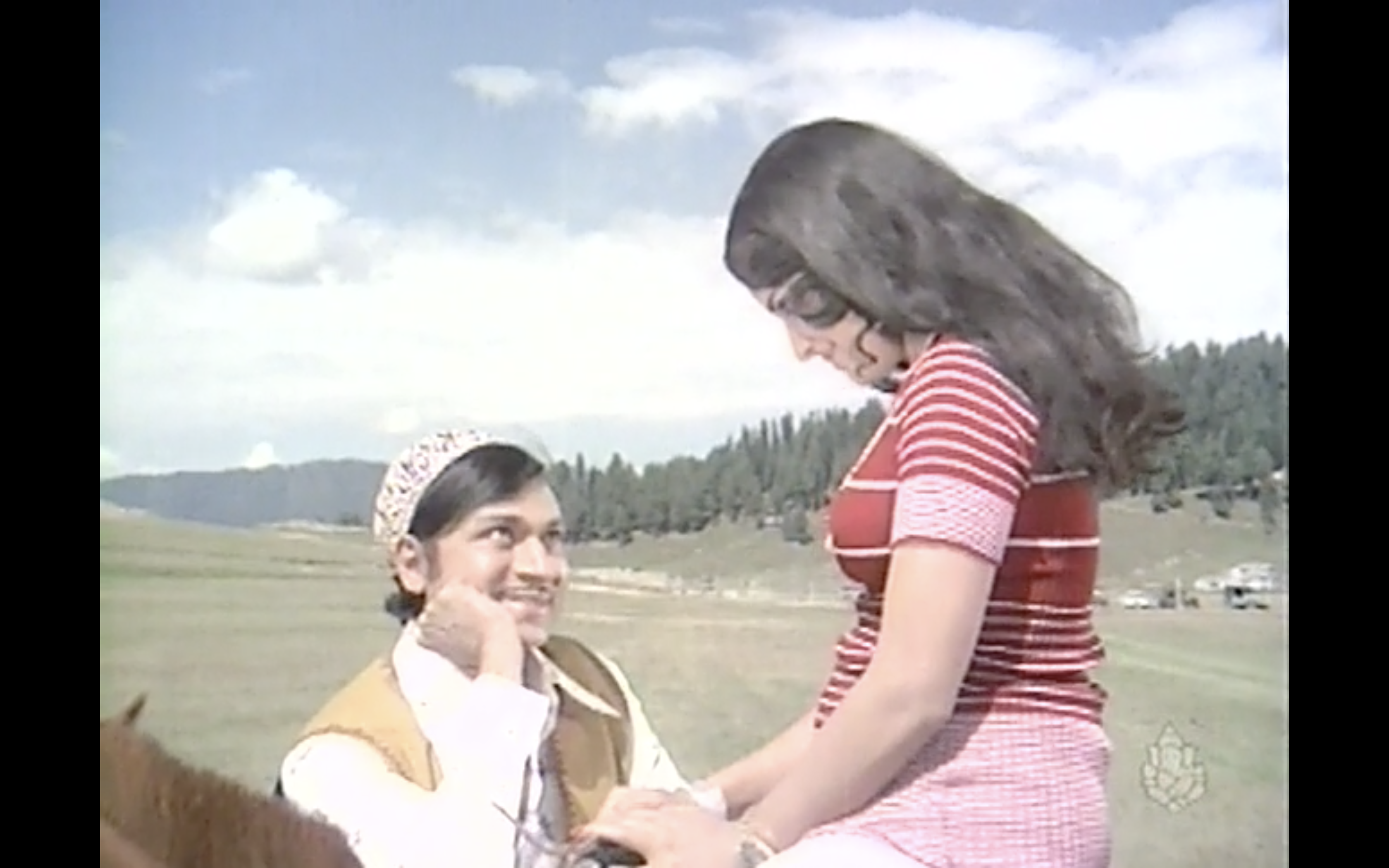
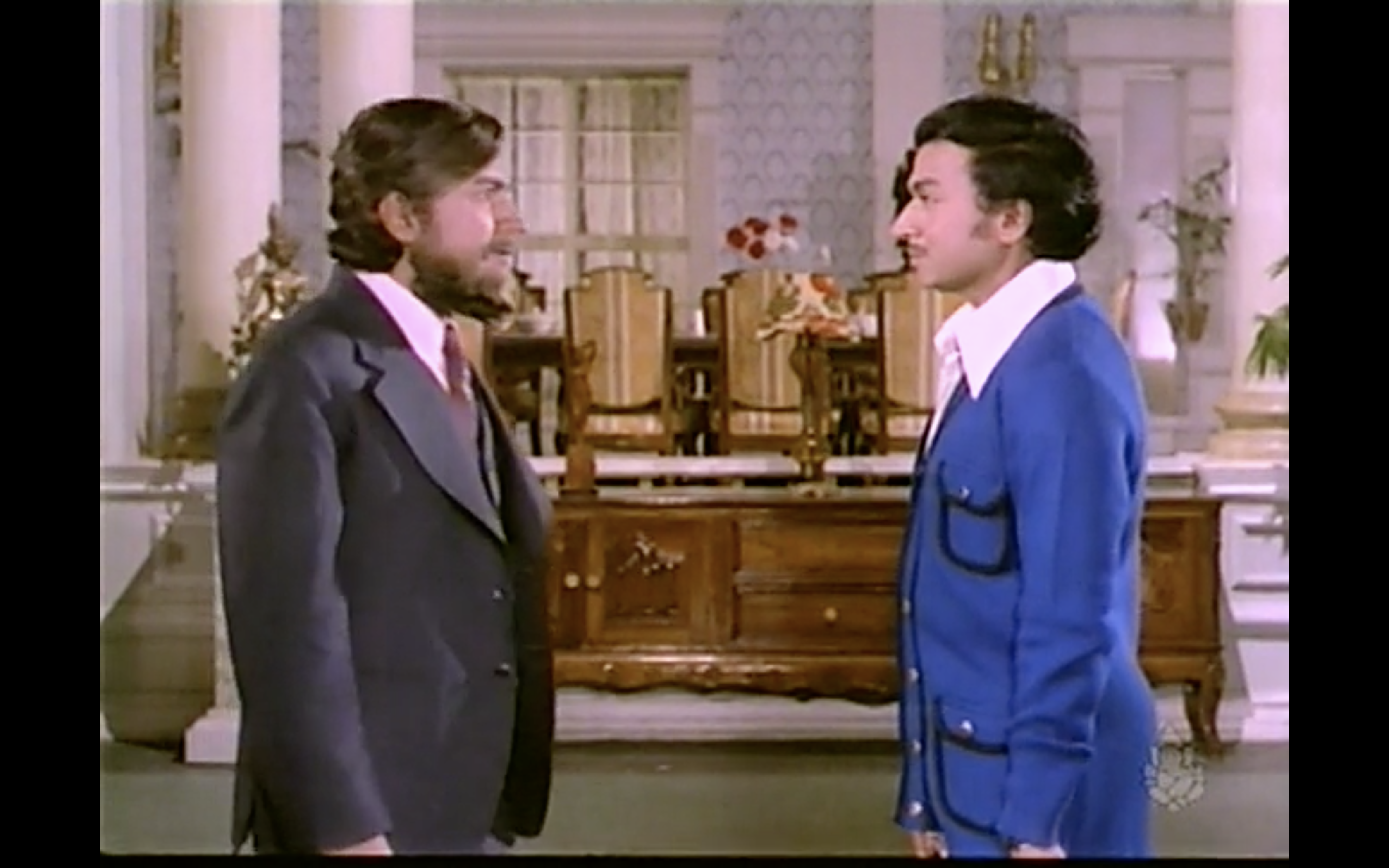

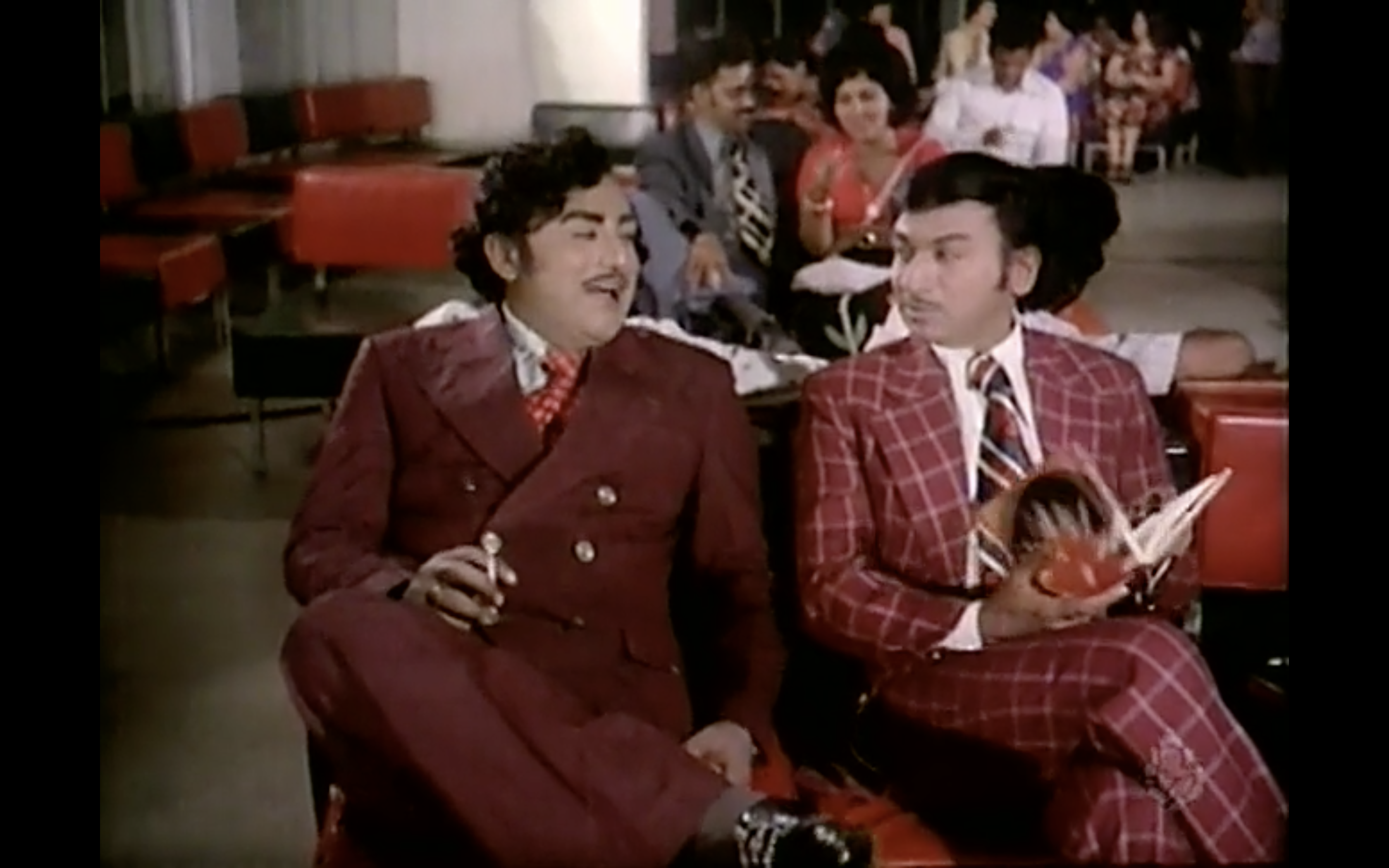
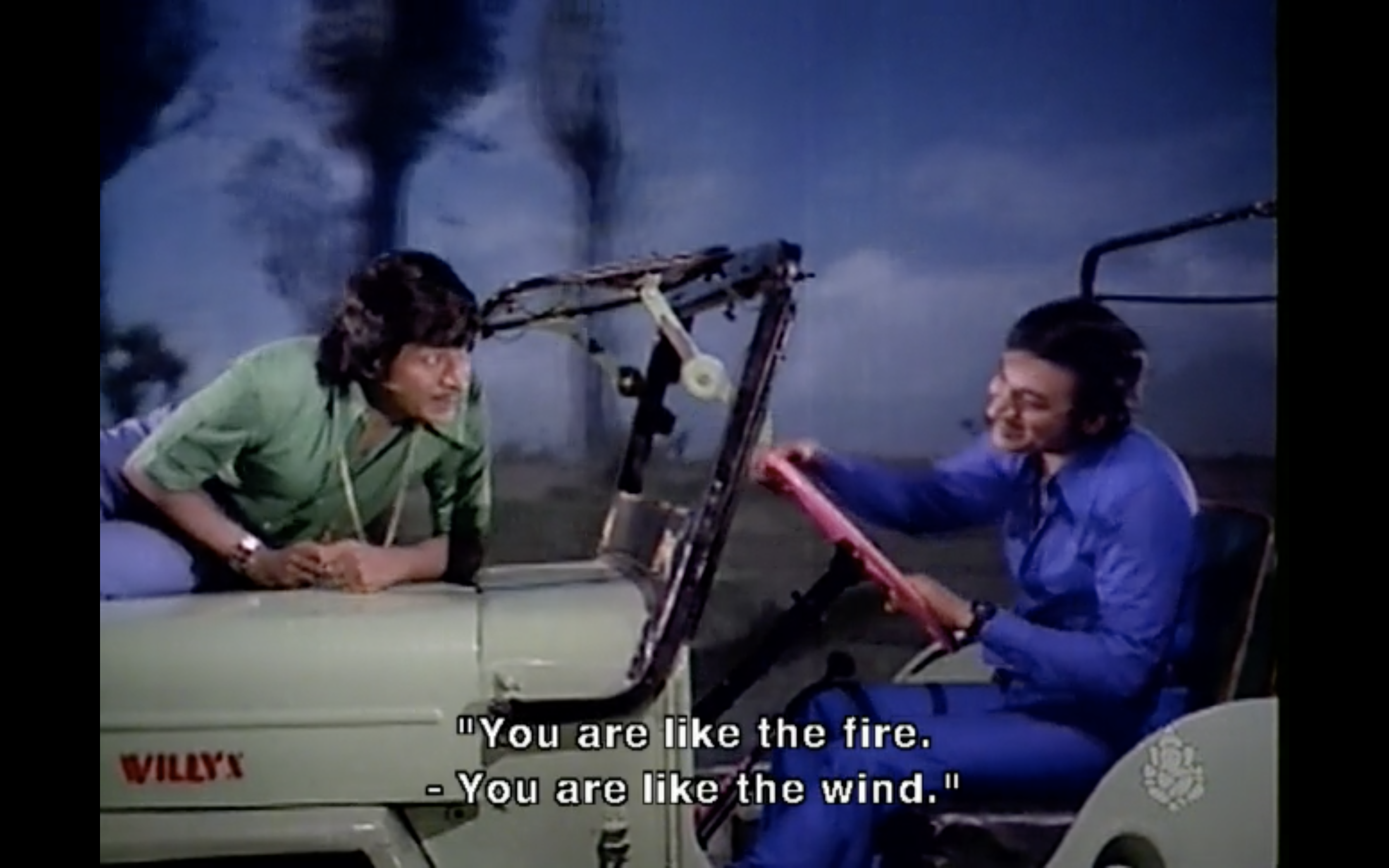

There is a lot going on here, but I found Shankar Guru less confusing than Mahaan, and the different threads are all quite easy to follow. Partly this is due to Dr Rajakumar who makes each of this three characters sufficiently different from each other that they are easy to tell apart. Rajashekhar aka Jayaraj has been devastated by the loss of his wife and despite falling on his feet he still pines for her every day. Shankar is the ‘good son’ who loves his mother and is also hot on the trail of the jewel thieves, while Guru is a typical rich man’s son whose carefree ways contrast with the more serious Shankar. The three heroines are all excellent too. Kanchana may have been abandoned by her husband, but she has made a good life for herself and her son, and is quite able to take care of herself, thank you very much! Jayamala as Nalini is charming and every inch the rich heiress with a heart of gold, while Padmapriya seems to be thoroughly enjoying her role as spoilt and demanding Malati. Note her unique hairstyle in this song and also Dr Rajkumar’s commitment to the choreography!
There really is a lot to enjoy in this film. From the funky psychedelic opening credits to the stunning fashion choices this film is a riot of colour and seventies style. There is OTT drama at every turn as Shankar battles the jewel thieves and Guru tries to win Malini’s love, while the most important question is whether Rajashekhar and Sumati will ever be reunited again. Other smaller issues such as why Sumati is painting terrifying pictures of babies or why there are stuffed animal heads on either side of the door at the top of Jayaraj’s stairs and what exactly a lightening call is are sadly never answered, but what is life without some mystery?
There are three main threads to the storyline and a number of smaller sideplots, but all the chaos is pulled together nicely by director V Somashekhar without losing any of the suspense. Despite this being a typical seventies masala film, the women fare rather better than expected. Although Nalini and Malati are primarily the love interests for Shankar and Guru respectively, they both have distinct personalities and make important contributions to the storyline. Sumati has the largest role of any of the three heroines and I love how her character fights back when she is taken prisoner. Sumati is definitely much more enterprising and capable than her husband who doesn’t seem to have looked very hard for his missing wife.
If you enjoy masala and convoluted plots then Shankar Guru is one not to miss! Rajkumar is fantastic in his triple role and the three heroines are all terrific. The only downside is the rather poor quality of the prints available online and occasionally dodgy subtitles. Still a great watch and well worth tracking down. 4 ½ stars!
